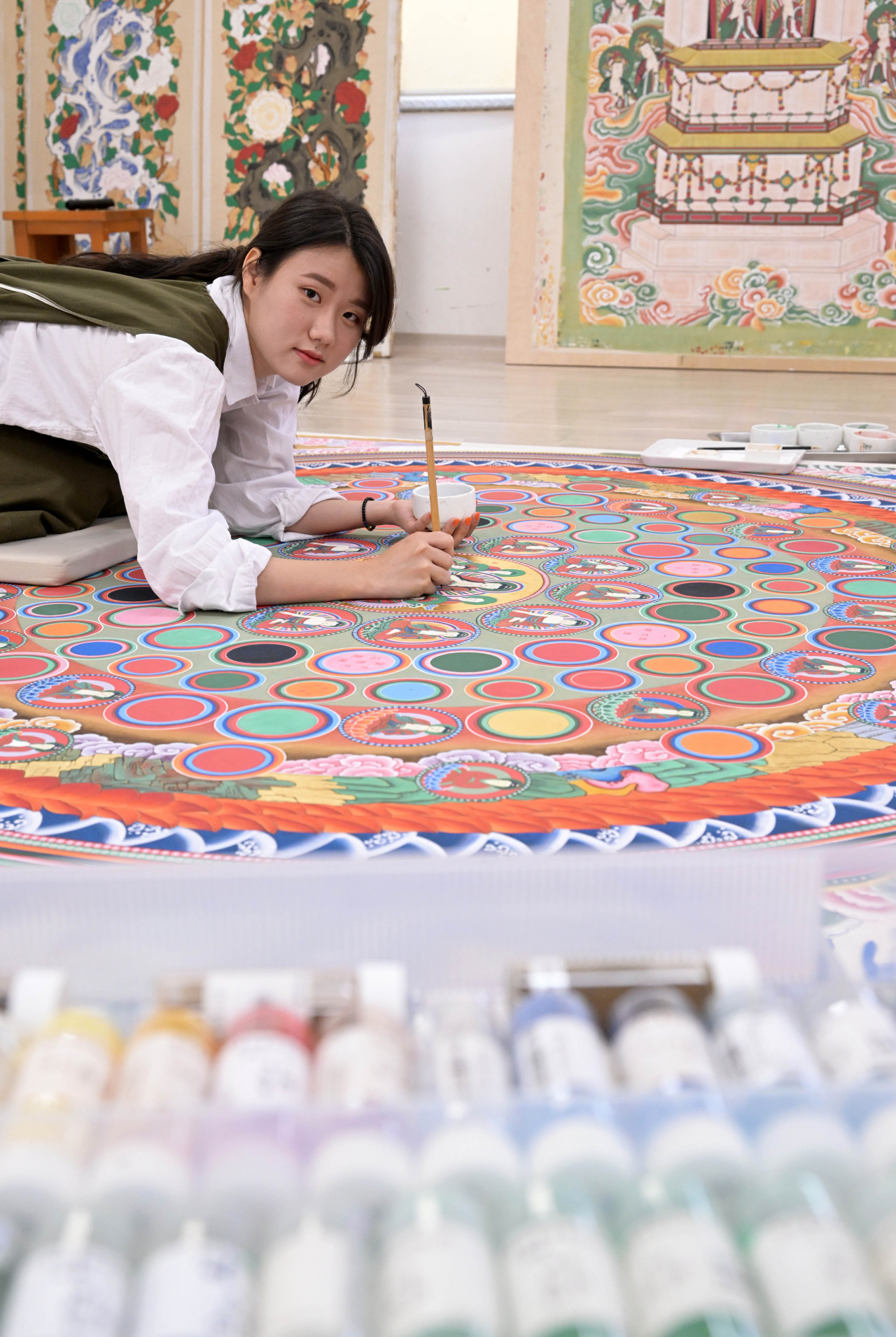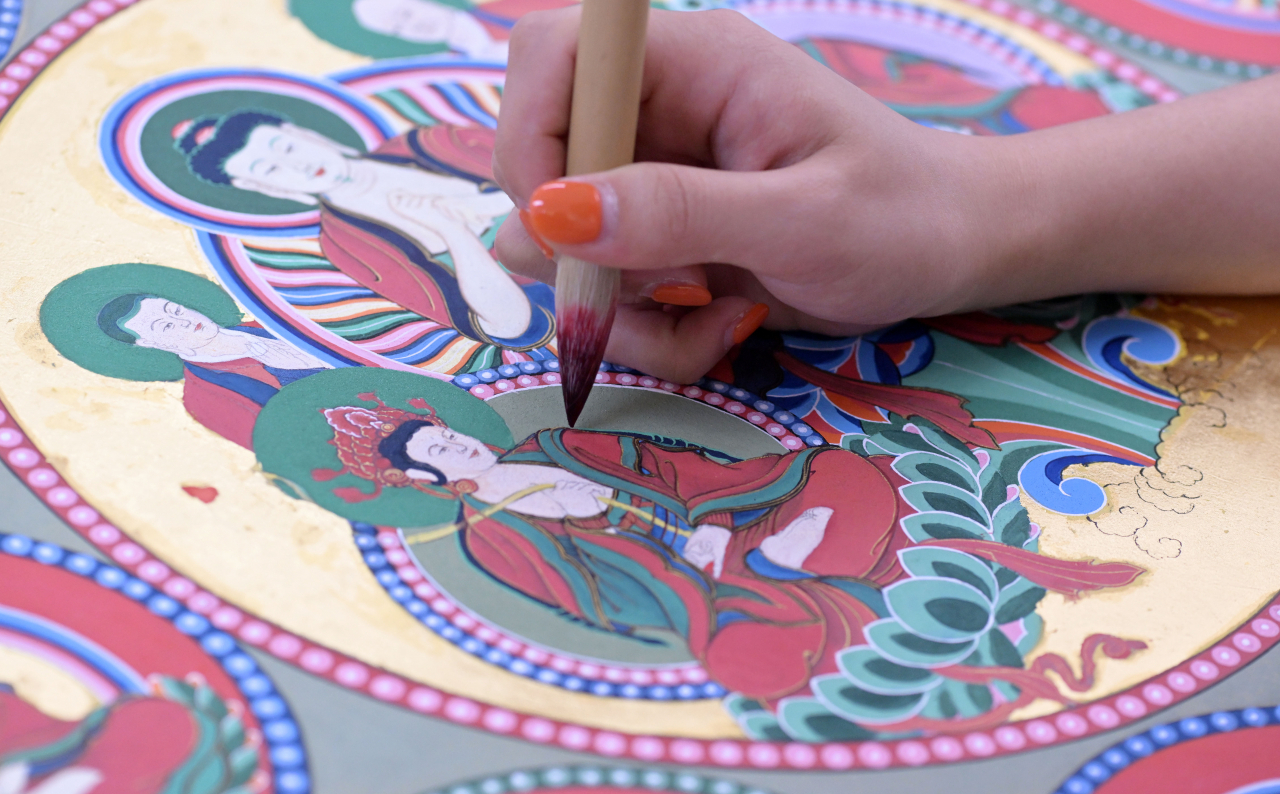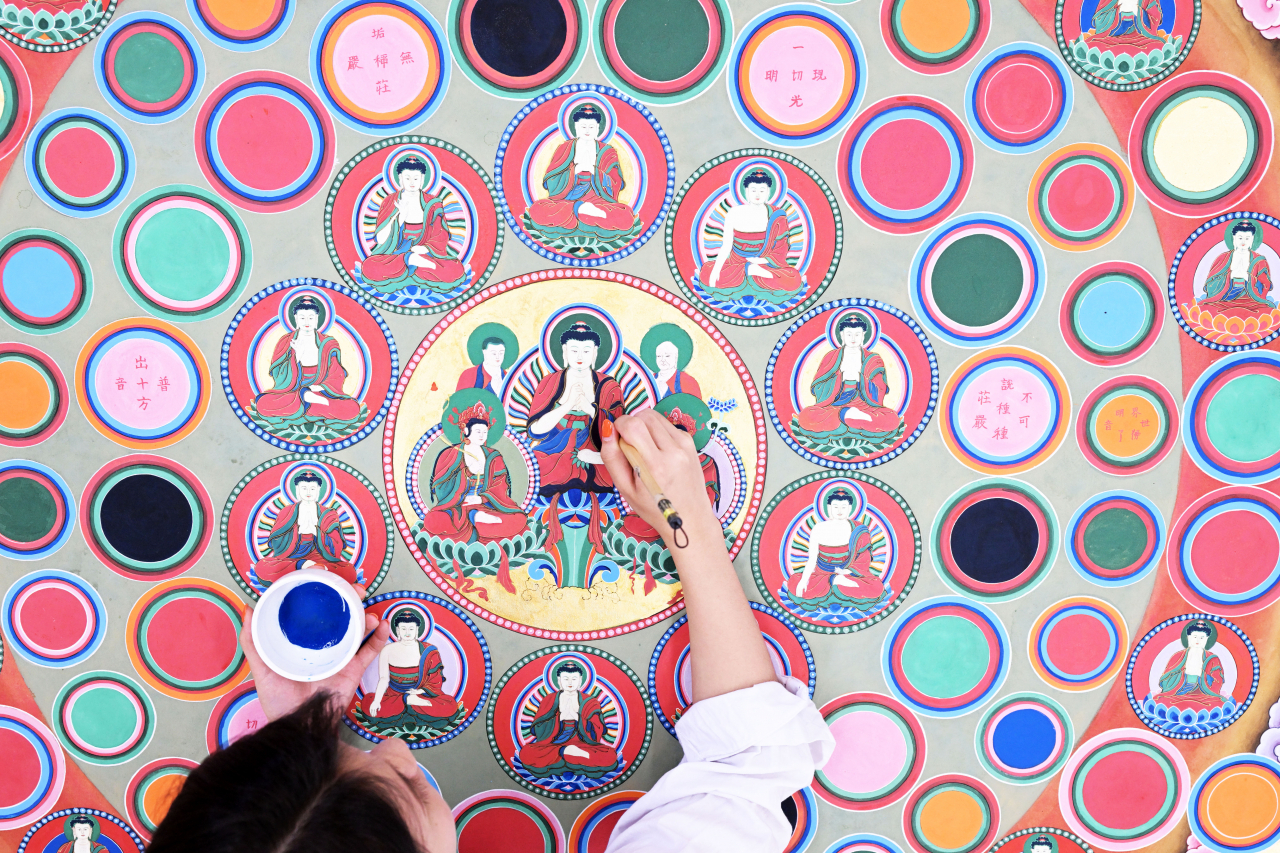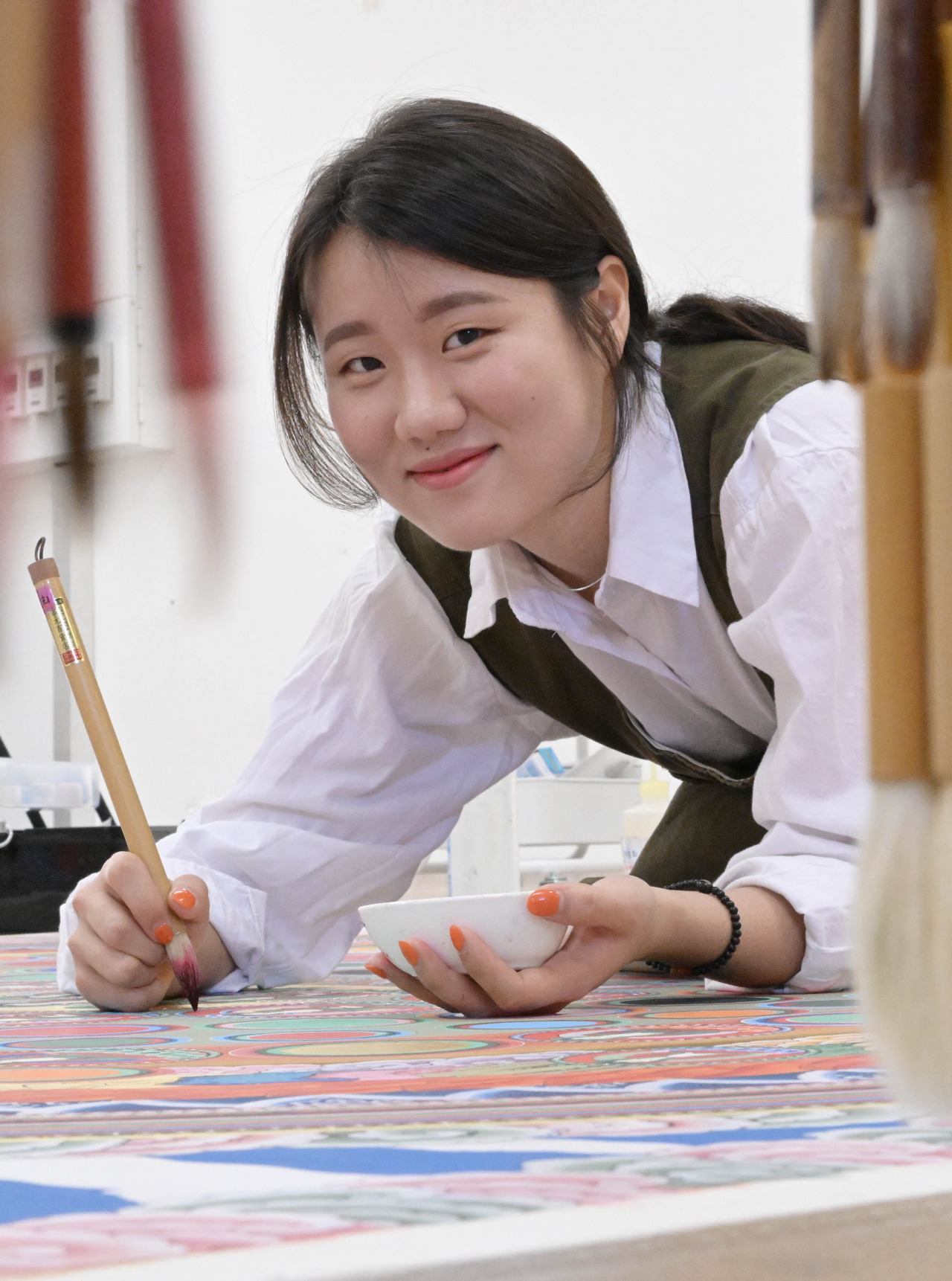
“I want to leave drawings that can be publicly praised by people in the present,” Kwak Seon-hye, majoring in traditional fine arts at the Korea National University of Cultural Heritage said.
Kwak studies Korea’s traditional Buddhist arts in college. She sees her role as a bridge between the past and future, underlining the importance of drawing beautiful and valuable works of the traditional genre.
“As (ancestors’ present) became our tradition from the past, what we do now might become a tradition in the remote future. Our works need to be something whose value and beauty are appreciated by today’s people (to remain alive in the future),” she added.

At the college’s working space, she practiced with a picture that imitates "Hwajangchalhaedo" from the 19th century, preserved at the century-old Yongmunsa temple in Yecheon, North Gyeongsang Province.
Hwajangchalhaedo is a type of drawing that illustrates the Buddhist universe with concentric circles.
“I want to call painting ‘farming.’ The painter should work diligently for weeks or even seasons to finish one, like a farmer,” Kwak said, showing how she painted the colorful circles of Hwajangchalhaedo.

Vairochana Buddha, the fundamental force behind every phenomenon, sits at the very center of the circles in her drawings, showing the religion’s philosophy that everything in the world shares a common root and is interconnected.
“Only efforts to remember and explore traditions can keep them alive,” she said.
Describing her work process, she said there’s another reason for likening her work to farming.

“They are both very sensitive to the weather,” Kwak said.
“There is a good day to stiffen paper and another day to fix it to a frame. If the weather is too cold or too hot, the paint can get separated from the canvas.”

Despite the delicacy and time-consuming nature of the work, she vividly expressed her love and hope for traditional art.
“A news article with the slogan ‘What is Korean is what is most global’ encouraged me to keep going on this way,” Kwak said, with the hope of global appreciation of traditional Buddhist art.
“Understanding and inheriting tradition can take a long time. But I will keep trying to continue this tradition,” she added.
Photos by Lee Sang-sub
Written by Lee Sang-sub, Lim Jae-seong







![[Today’s K-pop] Blackpink’s Jennie, Lisa invited to Coachella as solo acts](http://res.heraldm.com/phpwas/restmb_idxmake.php?idx=644&simg=/content/image/2024/11/21/20241121050099_0.jpg)